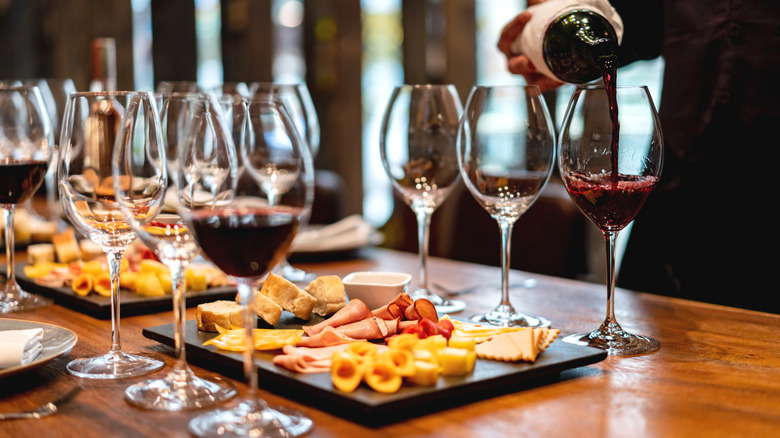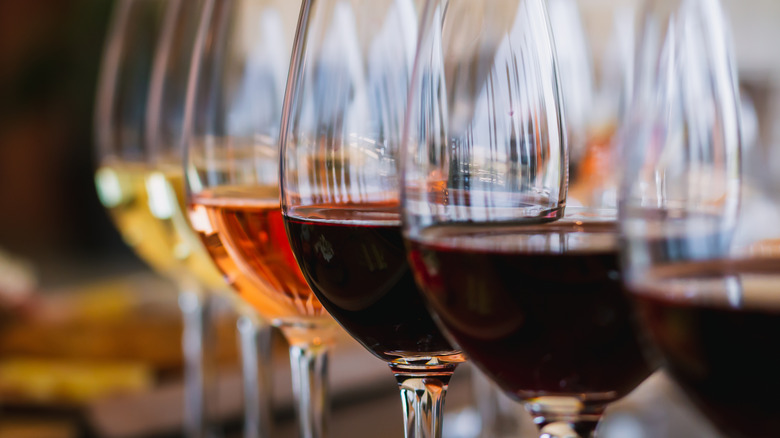A Tasting Expert's Number One Rule For Pairing Food And Wine Flavors
For those of us who love a good glass of wine, it can be overwhelming to figure out how to pair it with our food. There are plenty of confusing wine buzzwords out there — for example, what exactly does "full-bodied" even mean? To help with the confusion, Tasting Table spoke with a certified tasting expert, Mandy Naglich, a food journalist, Advanced Cicerone, and author of newly released, "How to Taste: A Guide to Discovering and Savoring Life."
Naglich helps us break down the process of pairing food with wine, beginning with one key piece of intel. "The number one rule when pairing foods and drinks is to match intensity," she says. For example, if your dish of choice is a scallop crudo, which has a delicate flavor, you'll need a wine that isn't too strong. "[It] will be immediately overpowered by a potent Cabernet Sauvignon," Naglich explains. "Brut Cava with a more subtle flavor profile and a hint of sweetness is a better match."
Put plainly, flavor power needs to match flavor power. Naglich added, "Whether it's sweetness that is incense like a caramel cream cheesecake or spiciness in curry, it doesn't matter which flavor is powerful, just how powerful it is. If you start there and match the flavor power on your plate to the bottle you choose, the pairing will be generally pleasant and in balance." To achieve this balance, there are some rules you can look to for guidance.
Naglich recommends looking to science to understand food and drink pairings — up to a certain point
Speaking with Tasting Table, Naglich explained how science plays an essential role in understanding how to pair food with wine. Namely, it can help explain the way our taste buds handle food interactions (such as when enjoying a specific wine with a specific food).
"For example," Naglich explains, "bitterness blocks the perception of sweetness and to a lesser degree sourness. This is why a few drops of cocktail bitters are just enough to keep a drink 'round' or 'in balance,' rather than being too sweet or too sharp." Along these lines, Naglich notes that salt is so widely used because it can help prevent our taste buds from experiencing bitterness. For example, salt around the rim of a margarita glass lessens the lime's bitterness. "Instead of actually making it sweeter, salt just makes it easier for us to sense sweetness," she says.
But there's only so much that science can explain. At a certain point, a food pairing experience comes down to our own individual perceptions and tastes. As Naglich puts it, "So much of what we enjoy when it comes to eating has to do with our life experiences and environment." In other words, don't let the "rules" of food pairing stop you from pairing a certain food with a certain wine — but remember that said rules, such as matching the flavor power in your wine and food pairings, will always be there when you need them.

